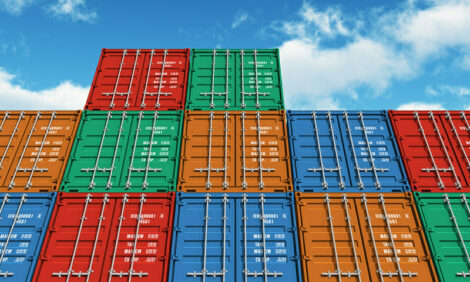



Danish Project to Reduce Emissions from Cows
DENMARK - Are Danish burps just as bad as foreign ones? This is one of the questions facing the Danish cattle scientists who are trying to reduce the impact of cattle on the climate.Cows burping methane is a natural process, but if scientists can reduce the emission of this potent greenhouse gas from cows, it will benefit both the environment and agriculture says the Faculty of Agricultural Sciences, Aarhus University.
With half-closed eyes, the cow lies peacefully and ruminates in its field of green grass. It all looks very picturesque, but every time she burps she contributes to global warming. Exactly how much greenhouse gas cows emit and how much this emission can be reduced is something that scientists at the Faculty of Agricultural Sciences and their colleagues from KU-Life have started looking into.
As part of the Ministry of Food, Agriculture and Fisheries’ (MFAF) project ”Livestock farming of the future”, scientists will develop new feeding strategies to reduce methane emission, while improving the use of energy from the feed. Methane as a greenhouse gas is 21 times more potent than CO2 and is therefore a significant contributor to global warming. It is also full of energy.
"Methane is the same as natural gas and is therefore a rich source of energy. A lot of the energy in the feed is thus lost with the methane," said senior scientist Peter Lund, who is in charge of the project.
"Although methane emissions cannot be completely eliminated, they can be reduced via the feed, as the loss of methane varies according to the composition of the feed. We expect to be able to design feeding strategies that reduce methane emissions by 10-15 per cent," he added.
Some of the strategies are likely to reduce the utilization of the feed or change the characteristics of the milk. Besides developing feeding strategies that reduce the emission of methane from dairy cattle, the project will therefore investigate the link between methane production, nutrient digestibility and milk production.
Danish cows are more climate-friendly
On a global level, agriculture is responsible for approx. 37 per cent of the anthropogenic emission of methane. If you use available figures to calculate the emission from Danish agriculture, the methane production from livestock digestive systems is 133,000 t per year, with cattle contributing 114,000 t in burps and farts! This corresponds to 118 kg per dairy cow per year – which is half a litre of fuel oil per day.
- It is just a rough guess that approx. 6 per cent of the energy from the feed ends up as methane. We have no figures in Denmark for how much methane cows emit. If we can document that the level in Denmark is actually less, it will be very significant, says Peter Lund.
- Danish cows have one of the lowest emissions of methane per kilo milk in the world due to their high yield.
Knowledge of the actual loss of methane from a given feed ration will give cattle farmers the tool to adjust the composition of the ration and thus reduce methane emissions and improve feed utilization.
Natural hot air
Burping is a natural and inevitable result of the digestive process in the cow. Microorganisms in the cow’s rumen convert the feed into nutrients that are easier for the cow to assimilate. Some of the waste products from this digestive process are emitted as burps and a much smaller part is emitted at the other end as flatulence. The burps account for 95% of the cows’ methane emissions.
By changing the composition of the feed, the farmer can change the composition of the microflora in the rumen of the cow – within a certain range, of course. You cannot, for example, change a cow to a kangaroo, which has a completely different microbial composition in the digestive tract that converts hydrogen and carbon dioxide to acetic acid instead of methane.
Cows in tents
In order to enable scientists to direct their research at the most interesting strategies, the cows will be going camping! The tents will be equipped with an extraction fan so that scientists can get an accurate measure of their methane emission. On the basis of the results from this part of the project, scientists will select their strategies, which they will then test on a larger number of cows under more normal housing conditions. This part will measure milk yield, feed consumption and feed utilization. The manure from each of the experimental groups will be collected and used in the research biogas plant.
"It is important to get the whole chain from cow to milk to biogas," saidPeter Lund.
"A reduction in methane emission is a win-win situation, as both climate and agriculture can benefit from the results. It is possible to make Danish cattle production more climate-friendly, but the potential is even larger in developing countries. These countries generally have many ruminants and very poor quality feed with a correspondingly poor utilization of energy from the feed."
The project “New feeding strategies to reduce enteric methane production in dairy cattle” comes under the MFAF project “Livestock production of the future” and is supported both by the Ministry and by the Milk Levy Fund. The project is a collaboration between DJF, the Danish Cattle Federation and KU-Life and runs from April 2009 to April 2012.
TheCattleSite News Desk


